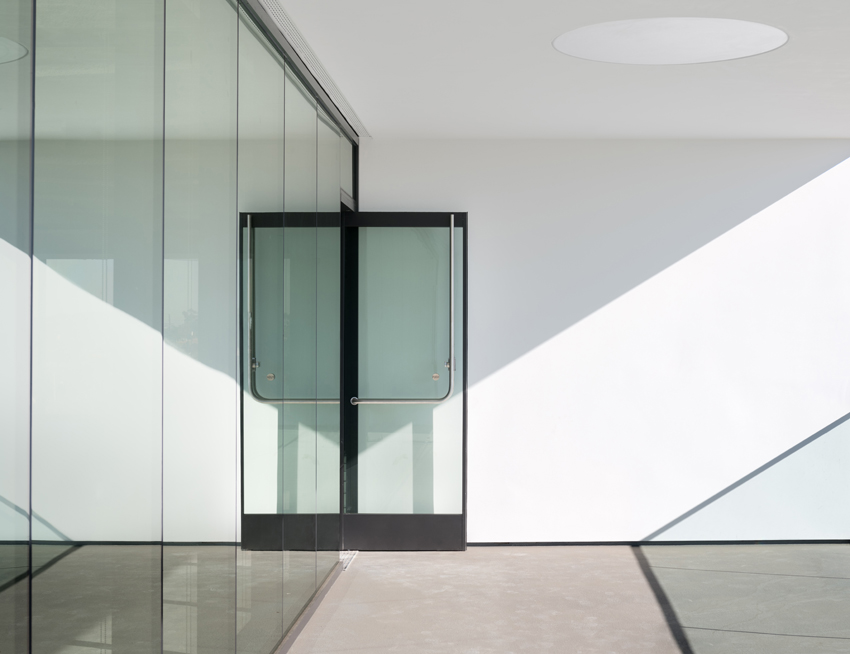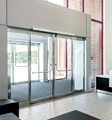Building and Energy Code Updates
Glazing in Buildings
A significant design feature of most commercial buildings is the glass and glazing that is incorporated into a building facade. There are many variables related to their design, such as the type, size, shape, color, and configuration of the glazing, which often receive plenty of attention. There are also many variables that affect the performance and energy code compliance of the glazing system, including the percentage of glazed to opaque wall areas, the number of layers of glass, the type of glass used, glass treatments or coatings, the framing system that holds the glass, and even the type of spacers between double- or triple-paned products. It is important to recognize that all of these variables are essentially different components of a glazing system that can be controlled and specified to suit specific project conditions, climate zones, and code requirements. It is not about any one item alone (i.e., the framing system or the glass) but rather the entire makeup of all of them.
One very objective way to assess glass and glazing systems is to use the ratings developed by the National Fenestration Rating Council (NFRC). A commonly cited rating is NFRC 100, which is a set of procedures and guidelines for determining the U-factors of all types of windows and doors. This is the fundamental rating that many people look for in regard to demonstrating thermal energy performance both for influencing the building design and for demonstrating compliance with the IECC. Note that this standard looks at all of the components of a glazing product or system (i.e., window, curtain wall, entrance, storefront, etc.) and shows an overall U-factor for the product, not just the glass. This allows design professionals to make comparisons and decisions based on the total product, not just the glass used.

Photo courtesy of NBBJ
Glazed facades and entrances can be evaluated on performance based on testing reported by the National Fenestration Rating Council (NFRC) and others.
A similar rating is NFRC 200, which is used to determine the solar heat gain coefficient (SHGC) and visible transmittance (VT) of glazing in windows and doors. The SHGC is useful for determining how much heat is contributed from the sun through the glass. It is regulated by the IECC and has particular significance in warm climates. The VT is helpful in determining the effectiveness of daylighting and views in a space. Both of these NFRC ratings are essentially technical documents intended for use by testing labs and other window and door professionals. Hence, when window and door companies indicate that their products are tested or certified to NFRC 100 and 200, it simply means that they have had simulations and/or physical testing performed on their products in accordance with the guidelines published in NFRC 100 and 200.
The aspects that manufacturers control that directly influence the results of the NFRC ratings are many and varied. The glass can be standard double glazed or higher-performing triple glazed. The spaces between the glass panes can be separated by standard aluminum spacers or high-performance “warm-edge” spacers. The air in those spaces can be replaced with an inert gas such as argon. The glass itself can be treated with coatings to improve thermal emissivity (i.e., low-e) or change the SHGC—either of which may directly affect the VT of the glass and its coloration. The frames of the glazing systems used in commercial buildings are typically made out of aluminum, which is great at conducting heat and not good at restricting it. Hence, manufacturers incorporate one or more thermal breaks in the aluminum framing such that inner and outer aluminum members are held together with materials that conduct less heat but maintain appropriate strength.
All of these performance details can be specified in a project, along with the preferred appearance characteristics to achieve the desired outcomes. However, working with an experienced glazing systems manufacturer can help ensure that particular combinations of characteristics is indeed possible and available. It can also help determine the relative cost impact of different selections. If code compliance is a concern, it may also be able to help in that regard by offering systems that have been accepted in similar climate zones for similar projects. If there is any doubt, however, on which version of the IECC is in effect or what the code requirements for glazing are, the local authority having jurisdiction should be consulted.
Glass Entrance Systems
A great example of a glazing system that is widely used and needs to be fully code-compliant are glass entrance systems. These are often sought after as a visual focal point because they create an inviting sense of transparency leading into the building, while offering contemporary, elegant all-glass aesthetics. Hence, many commercial, institutional, and industrial buildings incorporate glass entrance systems on the main floor. While these are fairly common and may look similar, there are real differences in the way these types of entrance products perform. In the case of energy code compliance, attention needs to be placed on the specification of all of the component parts and materials of these glazed entrance systems.
Achieving the desired level of performance is based fundamentally on three things: 1) the structural and material integrity of the aluminum frame and glass; 2) the insulating value of the system; and 3) the ability to prevent air and water infiltration through the system. Fortunately, there are products available that address all three of these criteria and manage to do so with great aesthetic qualities. For example, there are ultra-narrow stile entrance systems available that provide an elegant, all-glass appearance, while still delivering exceptional thermal performance normally found in full-frame doors. Excellent thermal performance translates to U-factors as low as 0.33 to help control heat transfer. This is achieved in part by allowing insulating glass units (IGUs) to be used that are up to 1-inch thick. In addition, such entrance systems can demonstrate that they meet or exceed the air-infiltration requirements of the IECC and ASHRAE 90.1, both of which contain mandatory provisions on this topic.

Photo: Geoff Captain
Glazed entrance systems are available that are fully code compliant while also offering very elegant, clean visual appearances with narrow stiles and minimal hardware.
When it comes to the hardware used for door pulls and panic devices, there are options in this regard too. Commonly, such door hardware is attached directly to the frame. However, some manufacturers have developed a means to secure door-pull hardware directly onto 1-inch insulating glass panels using unique through-glass fittings. Styles include sleek tubular panic devices that yield an attractive floating-on-air appearance because the handles do not have to be attached to door stiles. This provides an added aesthetic and functional benefit without compromising the performance of the doors. This means that architects do not have to sacrifice aesthetics in place of thermal performance. By specifying an all-glass entrance system with the appropriate insulating glass, the glass composition of the surrounding framing system can match the entrance system, thus avoiding high variations in performance and looks. Maria A. Gomez, a principal with GFF Architects, sums it up this way: “The ultra-narrow stile entrance products we have specified solve the requirement for thermal performance and weather protection while maintaining an upscale look.”
Notice

www.crlaurence.com

www.tamlyn.com









